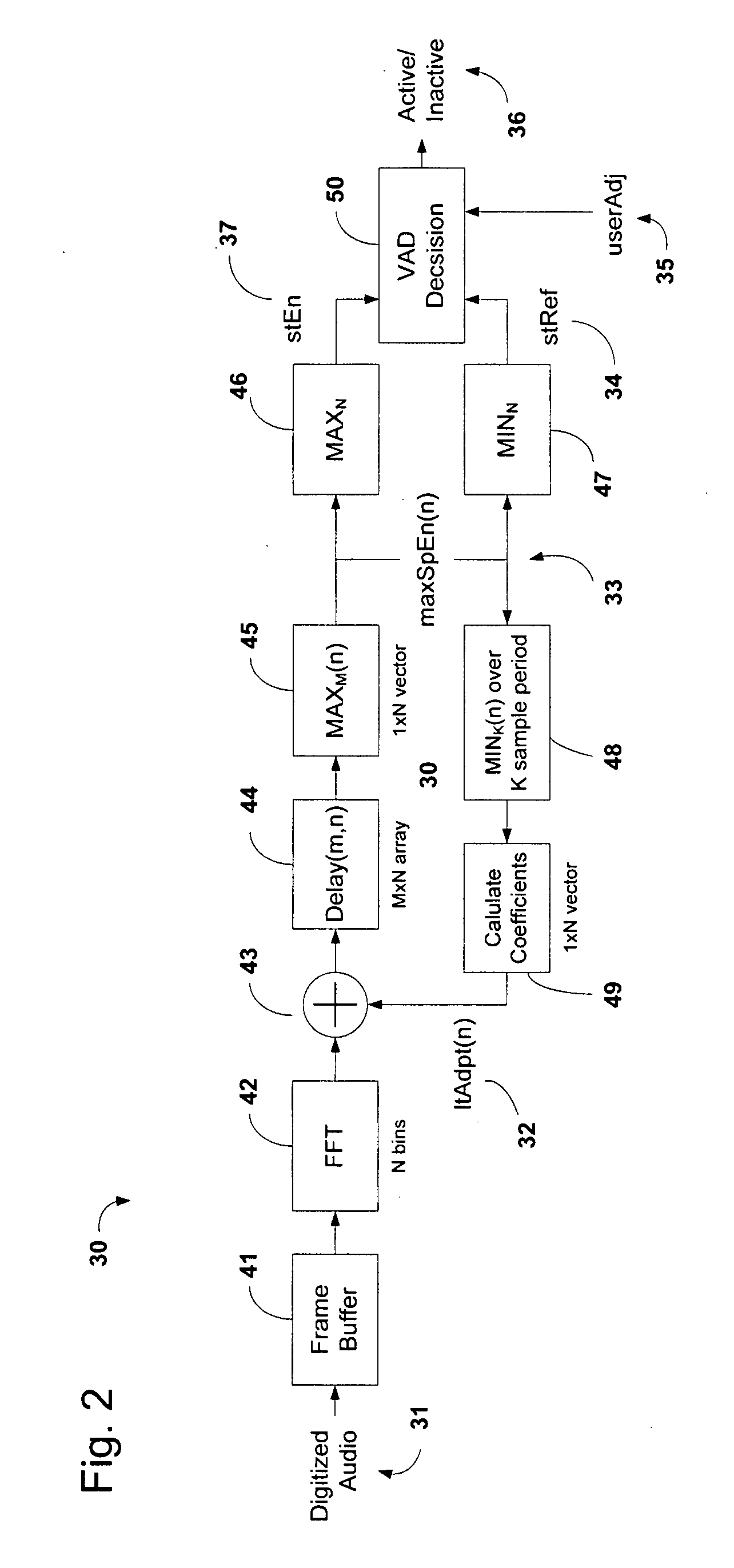System and method of voice activity detection in noisy environments
a technology of voice activity detection and noisy environments, applied in the field of system and method of voice activity detection in noisy environments, can solve the problems of affecting the accuracy of speech detection, affecting the detection accuracy of speech, so as to achieve high accuracy word detection rate and improve detection probability
- Summary
- Abstract
- Description
- Claims
- Application Information
AI Technical Summary
Benefits of technology
Problems solved by technology
Method used
Image
Examples
Embodiment Construction
[0042]A description of example embodiments of the invention follows.
[0043]FIG. 1 illustrates a representative embodiment for the present invention, referred to herein by the general reference number 10. The apparatus comprises a headset 13 with a single boom microphone 11 connected to an audio processing system 20 via a coaxial cable 12. The audio processing equipment 20 includes an audio band CODEC (Coder / Decoder) 21 that digitizes the microphone audio (input) from 11 and provides reconstructed audio (output) to the headset 13. The audio CODEC 21 is connected to a signal processor 22 such that audio samples are passed between each device (21 and 22) at the desired sample rate. In this embodiment, the sample rate is about 8 kHz, however this parameter may be any value desired by the target system. The actual value of the sample rate is not important. Human voice corrupted by background noise is applied to the input of the microphone 11. The input audio is digitized by 21 and process...
PUM
 Login to View More
Login to View More Abstract
Description
Claims
Application Information
 Login to View More
Login to View More - R&D
- Intellectual Property
- Life Sciences
- Materials
- Tech Scout
- Unparalleled Data Quality
- Higher Quality Content
- 60% Fewer Hallucinations
Browse by: Latest US Patents, China's latest patents, Technical Efficacy Thesaurus, Application Domain, Technology Topic, Popular Technical Reports.
© 2025 PatSnap. All rights reserved.Legal|Privacy policy|Modern Slavery Act Transparency Statement|Sitemap|About US| Contact US: help@patsnap.com



